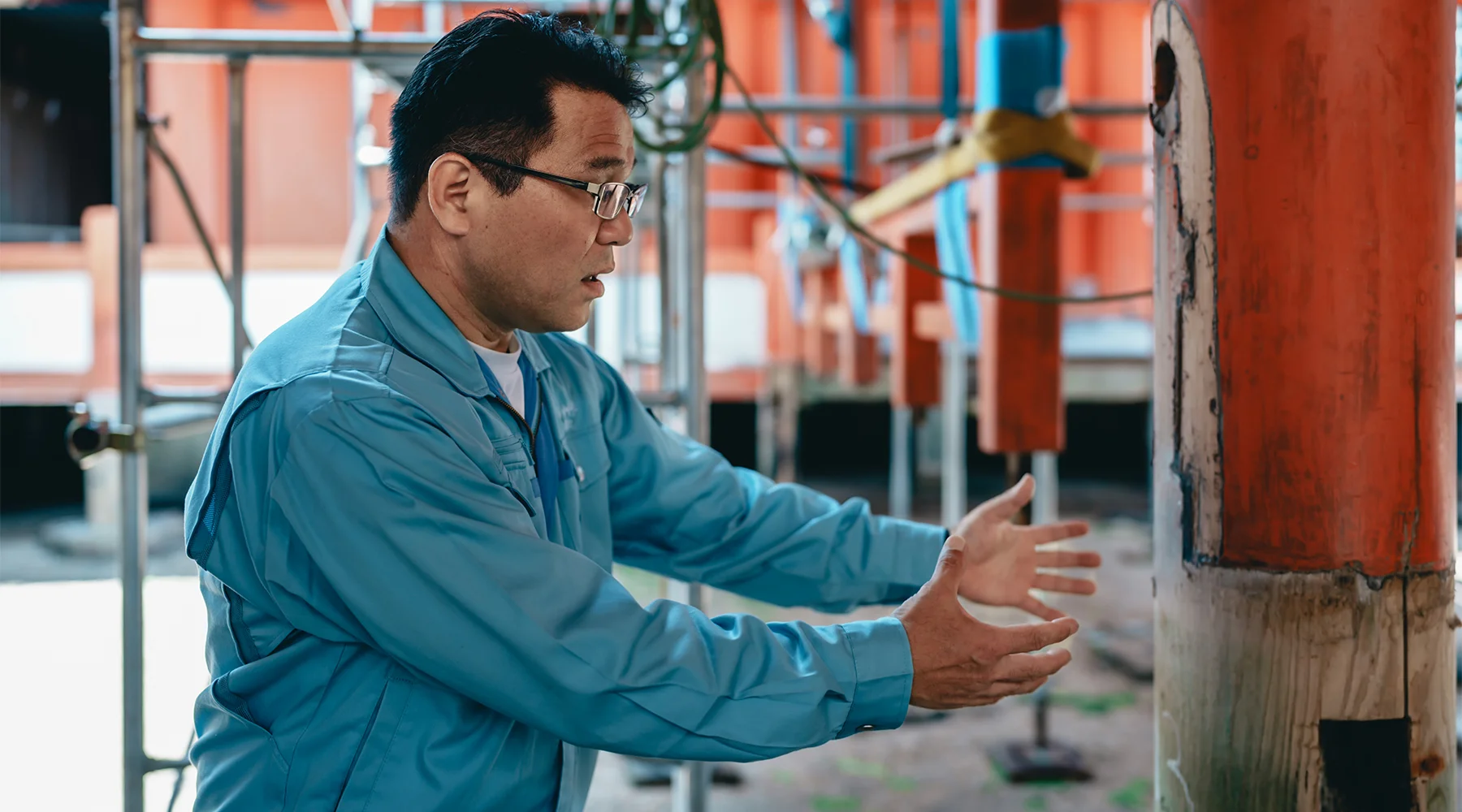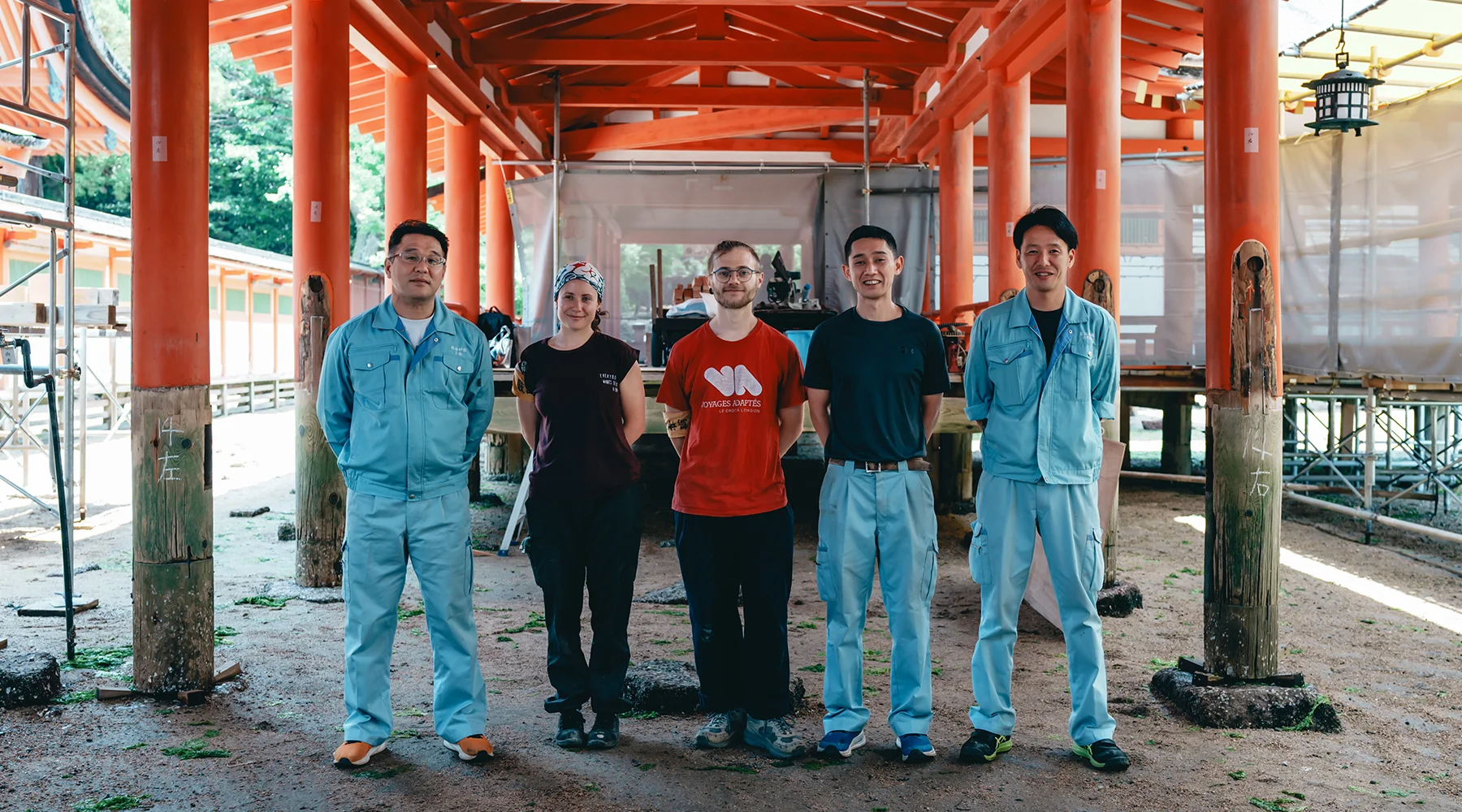Cultivate people and
entrust them with your techniques
to pass the Heian Period
on to the future.
"Miyadaiku" refers to carpenters who specialize in traditional Japanese wooden structures such as shrines and temples. Itsukushima Shrine is home to many architectural structures that are designated as national treasures or important cultural properties, and there are exclusive miyadaiku carpenters who are always available to maintain and repair these structures using a traditional carpentry technique called "timberwork." Mr. Shingo Mifune was appointed as master carpenter at Itsukushima Shrine at the young age of 34 due to his skills, and he has lived on Miyajima for the 18 years since then. We spoke to him about his work as master carpenter as well as his thoughts on cultivating younger workers.
Inheriting his father's lineage to
become a miyadaiku carpenter through his own hard work
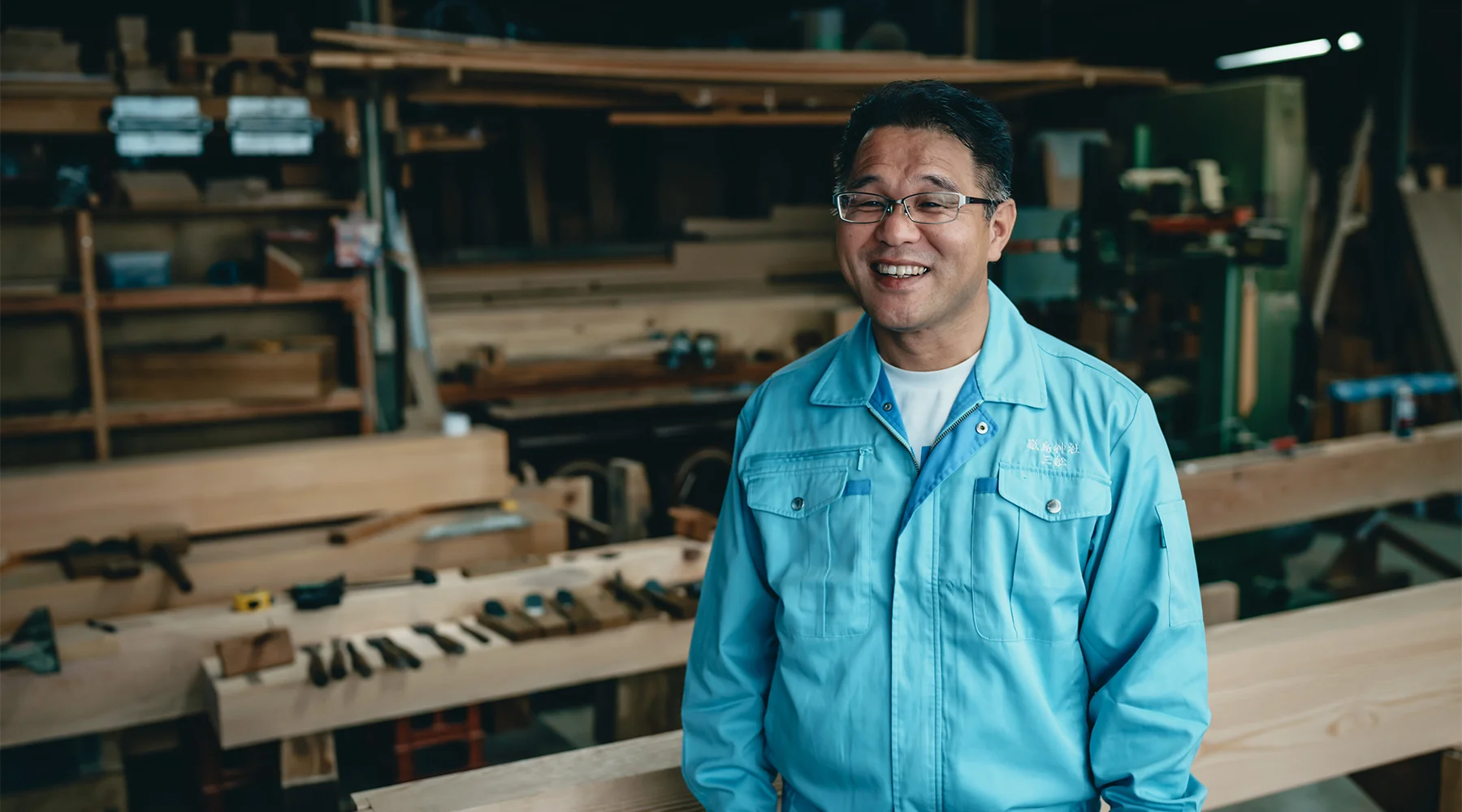
Master carpenter Shingo Mifune greeted us at the "Itsukushima Shrine Carpentry Shop," a workshop with a well-worn wooden nameplate located just a few minutes by foot away from the Itsukushima Shrine main pavilion. Mr. Mifune comes from a family of Buddhist priests in Kasuya County, Fukuoka Prefecture. He grew up watching his father work as a miyadaiku carpenter with a deep connection to temples.
"On my way home from elementary school, I would see my father sweating as he worked on-site. I genuinely thought he looked cool. I was also interested in making things and so I naturally aspired to take up the same vocation."
When he entered junior high school, he accompanied his father to the worksite and helped with cleaning and the like, and then about one year after graduating senior high school, he became a full apprentice, working as an assistant at a carpentry shop in a neighboring town.
As he worked on various jobs throughout the Kyushu region, he gained a wide personal network. He then received an offer from the carpenter in charge of Todai-ji Temple and moved to work at a carpentry shop in Nara. He went to worksites all around Japan including Eihei-ji Temple and Gumyo-ji Temple. Later, he received another offer to switch jobs through a fortunate personal connection to enter a shrine and temple construction company in Osaka, which did some work at Itsukushima Shrine.
"After about three years, my boss spoke to me about becoming the master carpenter at Itsukushima Shrine. To be honest, I wanted to experience more jobs, so I refused the offer three times. But my wife had grown tired of me only coming home once every two weeks, so she quickly agreed."
Thus, a young master carpenter only 34 years old came to support Itsukushima Shrine, making this a rare case for Japan.
"With both mountains and the sea, Miyajima has wonderful nature, so my children could grow up in a free and open way," says Mr. Mifune. His family also loves living on the island.
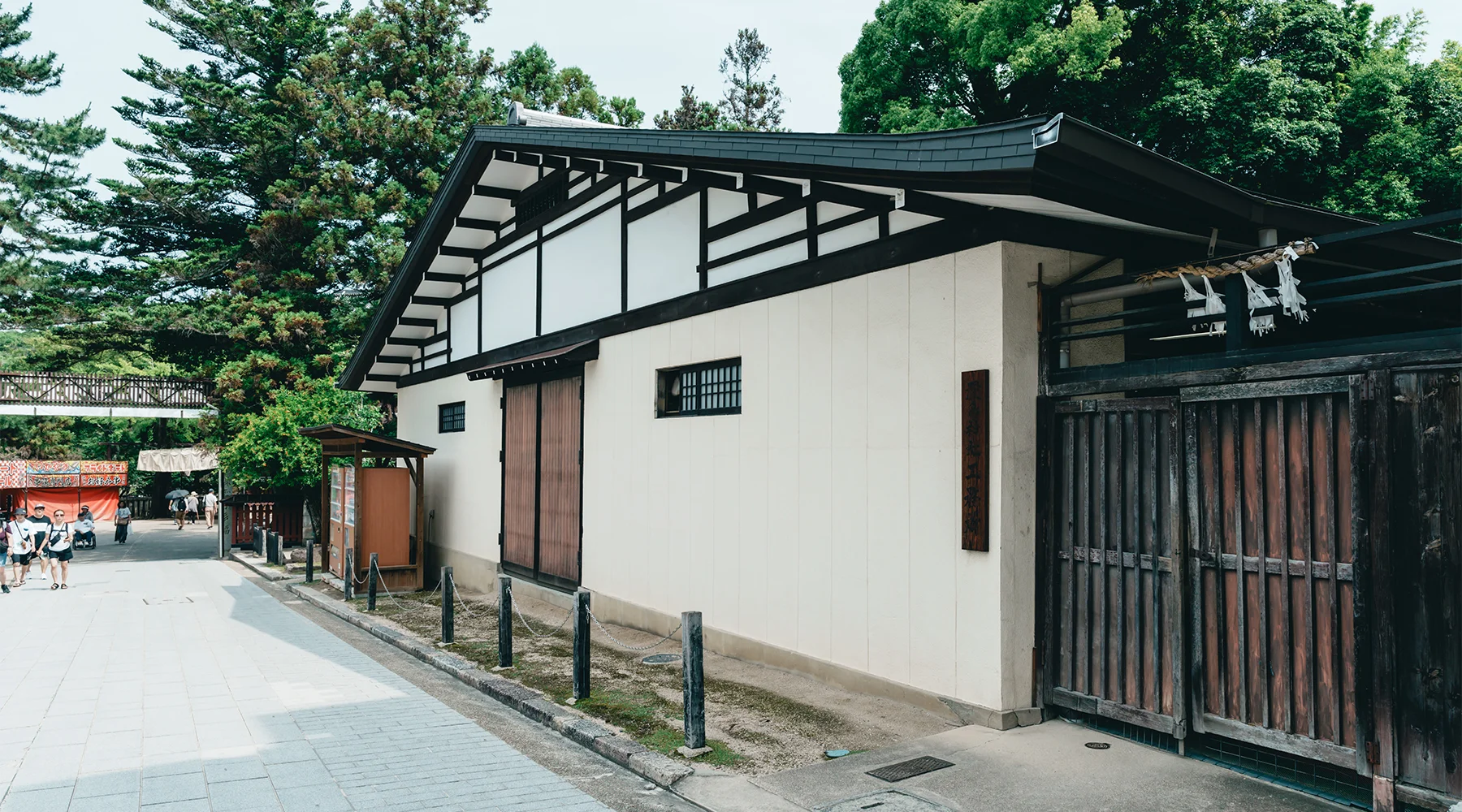
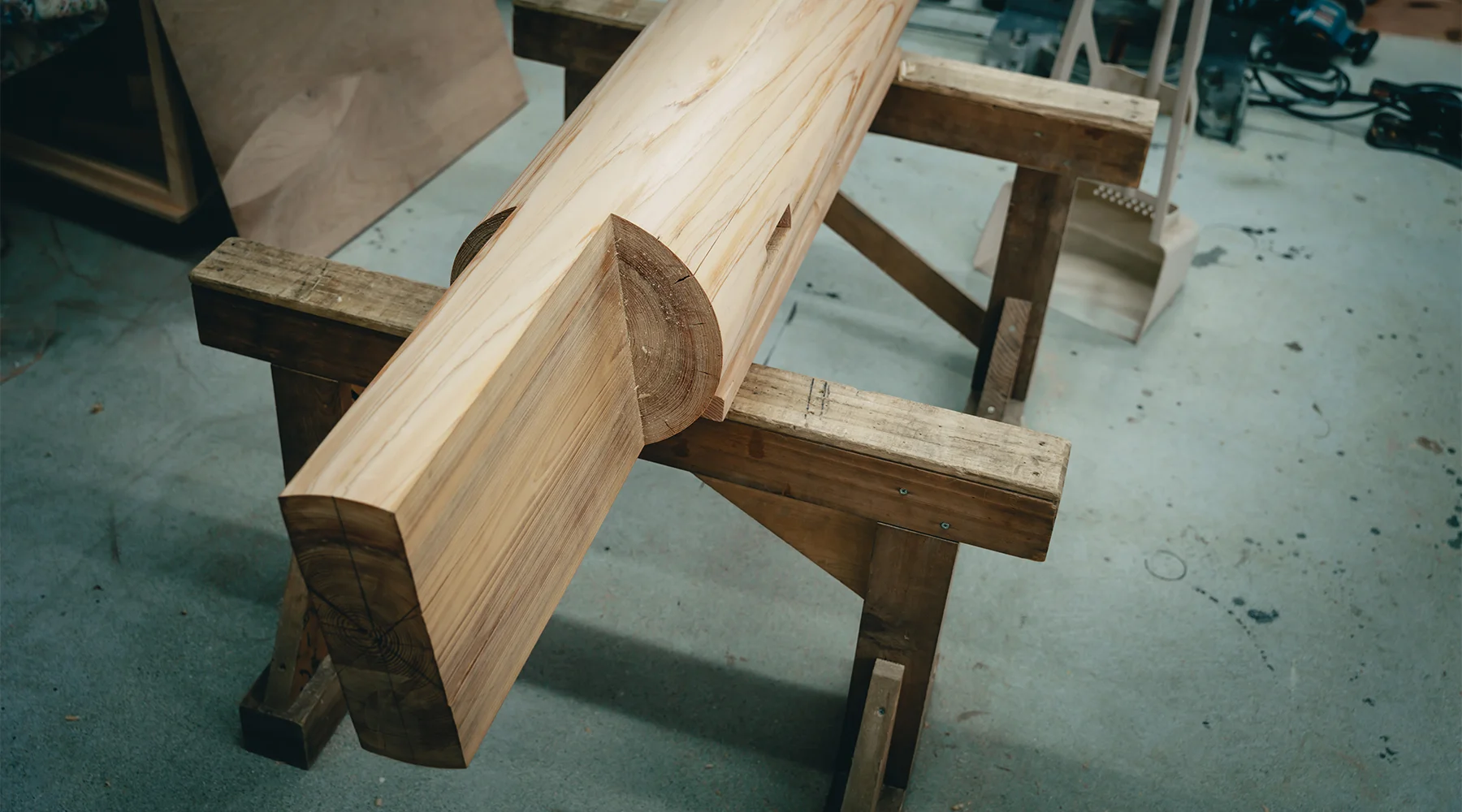
Itsukushima Shrine -
simple yet strong through the ingenuity of those before us.
The construction of shrines and temples is characterized by its use of "timberwork," in which timbers are fit together to create a frame. Tools used include chisels, planes, and an L-shaped ruler/carpenter's square believed to have been brought back from China by Prince Shotoku. Length is still measured using the shaku, a traditional Japanese unit of measure. Miyadaiku carpenters need techniques and knowledge based on experience, such as when taking warpage into account to process materials by hand.
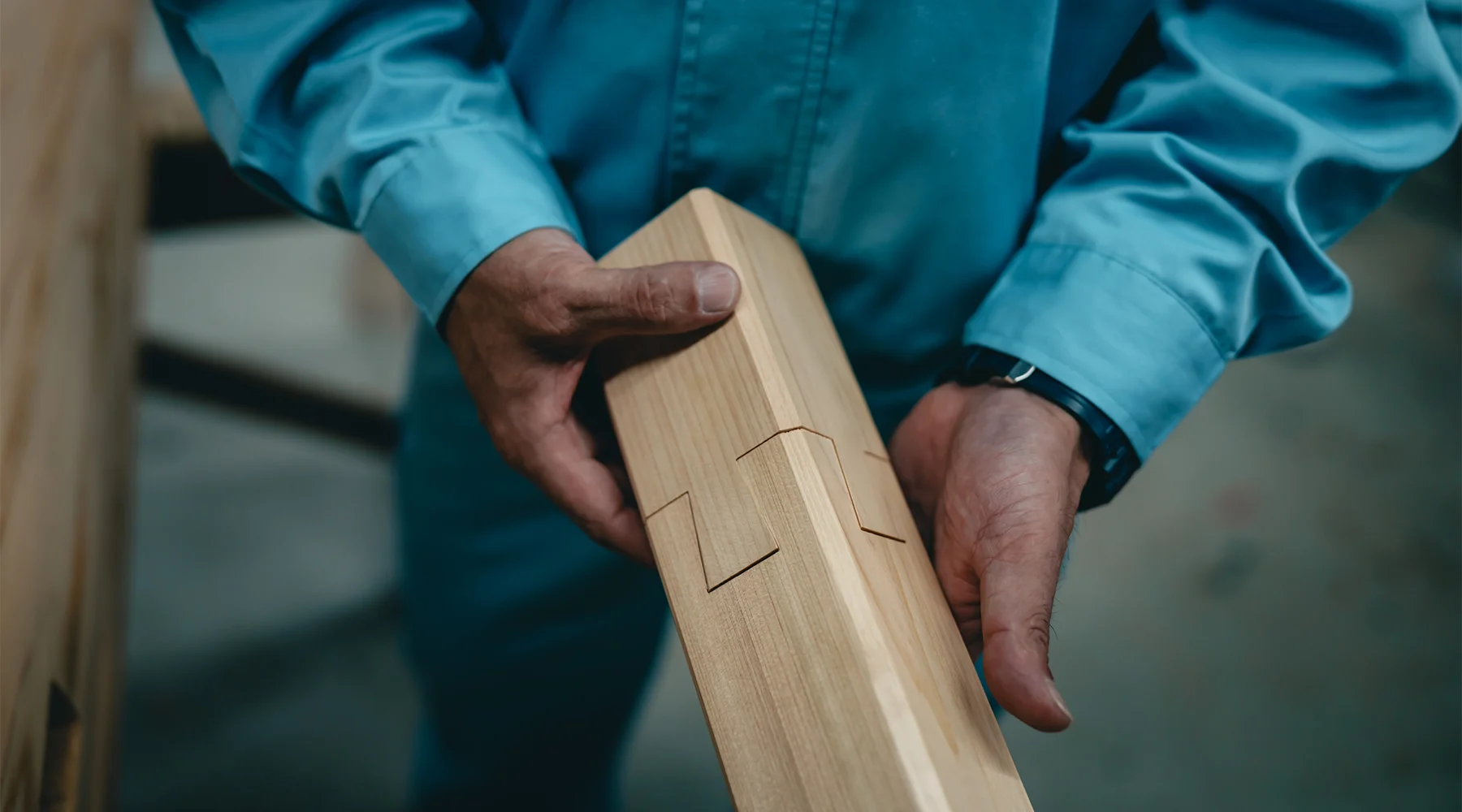
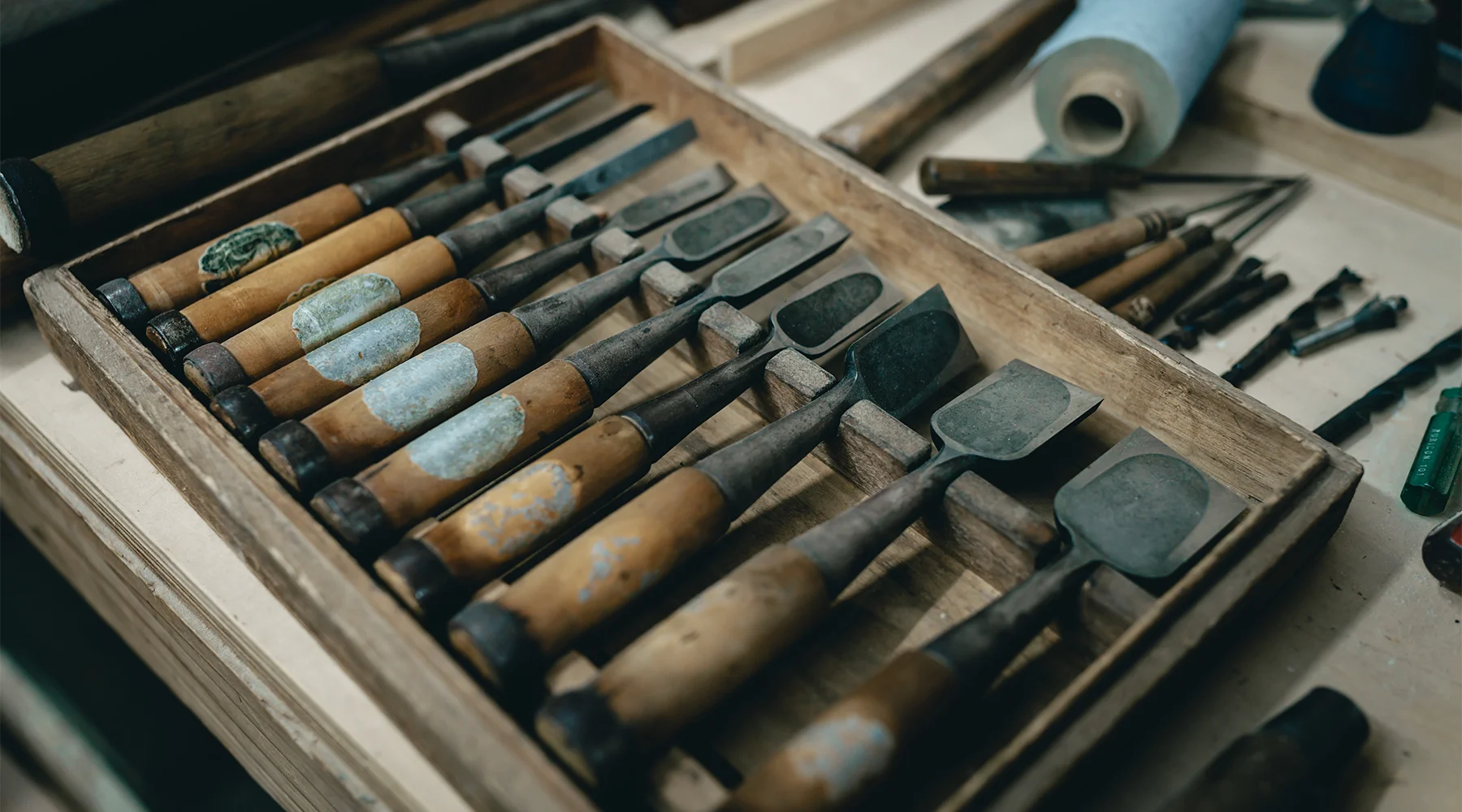
"Itsukushima Shrine was built in the Heian Period using the shinden-zukuri style. Compared to other buildings constructed after that period, which emphasized decorations, the structure itself is actually simple. But it is big and strong, and was put together in a rational way. It is wonderful because of its simplicity. The fact that the floating pavilion has been maintained for over 800 years is due to the endeavors of those before us," says Mr. Mifune.
However, because the structure allows the sea into the premises, the sea also makes things difficult. There are only eight days per month when the tide is low and allows for seven to eight straight hours of work. Work around the base of the pavilion is concentrated on those days, and even on other days, the schedule must be fine-tuned to match the fall and rise of the tide.
Furthermore, work must not impede religious rituals, wedding ceremonies, or other events. Mr. Mifune tells us that there are many challenges unique to being the master carpenter at Itsukushima Shrine.
Continuing to convey information to increase miyadaiku carpenters.
Some 18 years have passed since Mr. Mifune moved to Miyajima. He tell us, "I am saddened that there are many people who don't know about the miyadaiku carpenters or even the carpenter's shop on the island that have supported Itsukushima Shrine so far." He also feels deeply concerned about the lack of human resources throughout the construction industry. With that in mind, he decided to step forward and convey the work and appeal of being a miyadaiku carpenter. He created an Instagram account (@sima5rira_miyada19), and he also began giving outreach lessons at technical vocational schools and the like, eventually leading to an internship for overseas participants. Paolo and Romane are carpentry artisans from overseas who are interested in Japanese architecture.
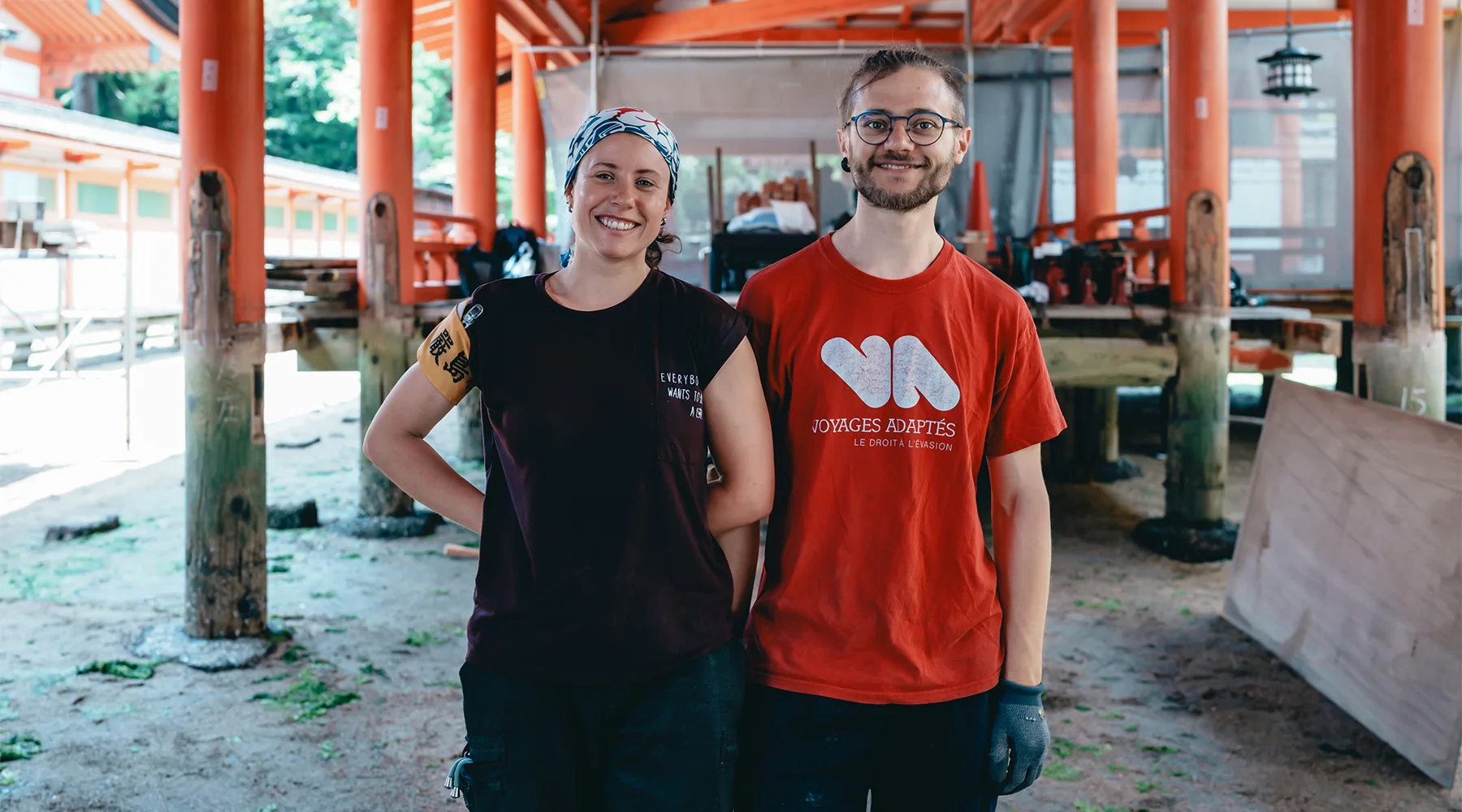
They have established a construction company in France.
It is the first time that people from overseas have come to study at Itsukushima Shrine.
On the day of this interview, the two were visiting Japan from France on visas. "Mr. Mifune lets us experience everything, and his instructions are very clear." "In France, we use planes by pushing them, but in Japan, you pull them. Even in just this one way of using a tool, everything feels fresh and new." They spoke to us in Japanese, which they have been learning for a year before visiting here.
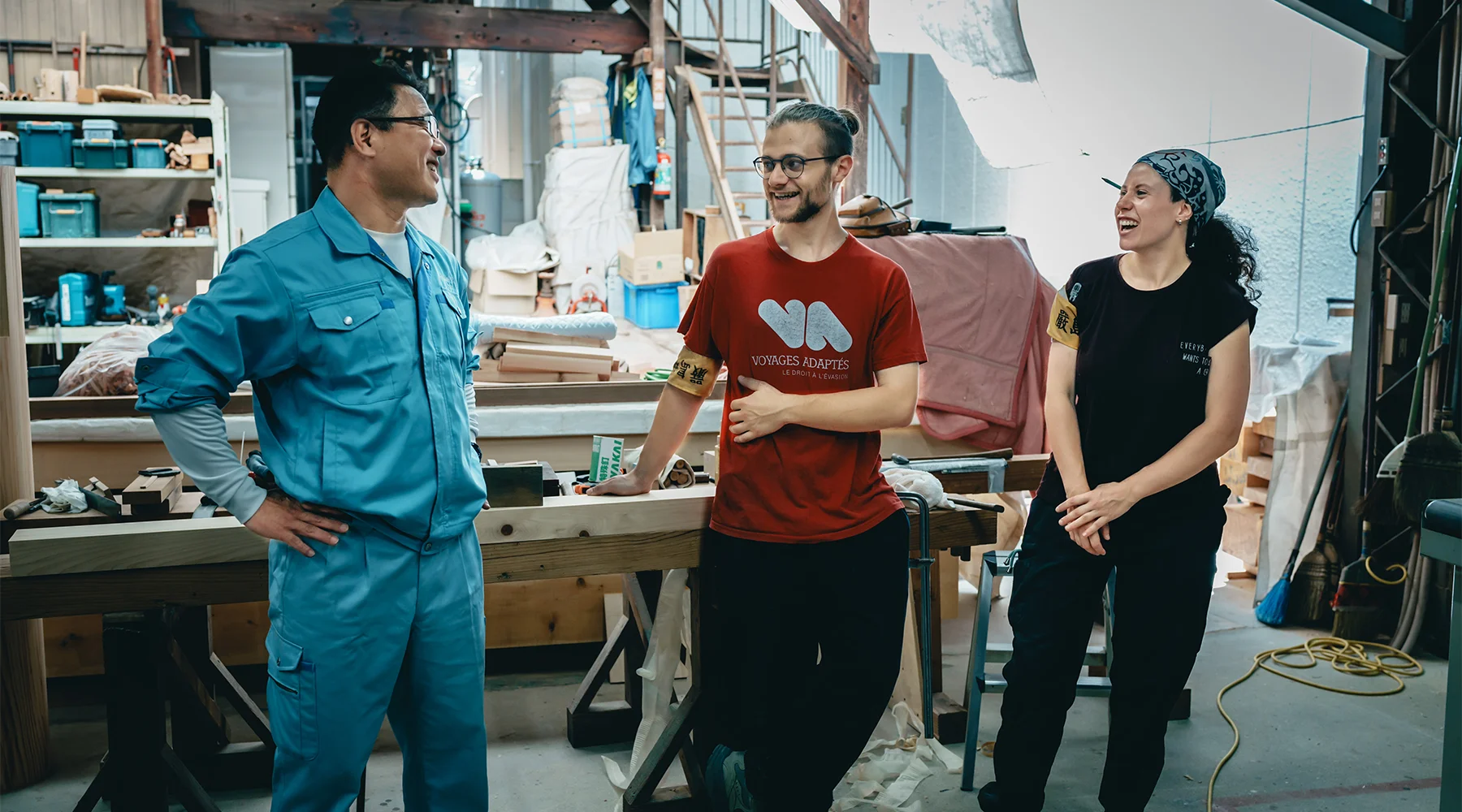
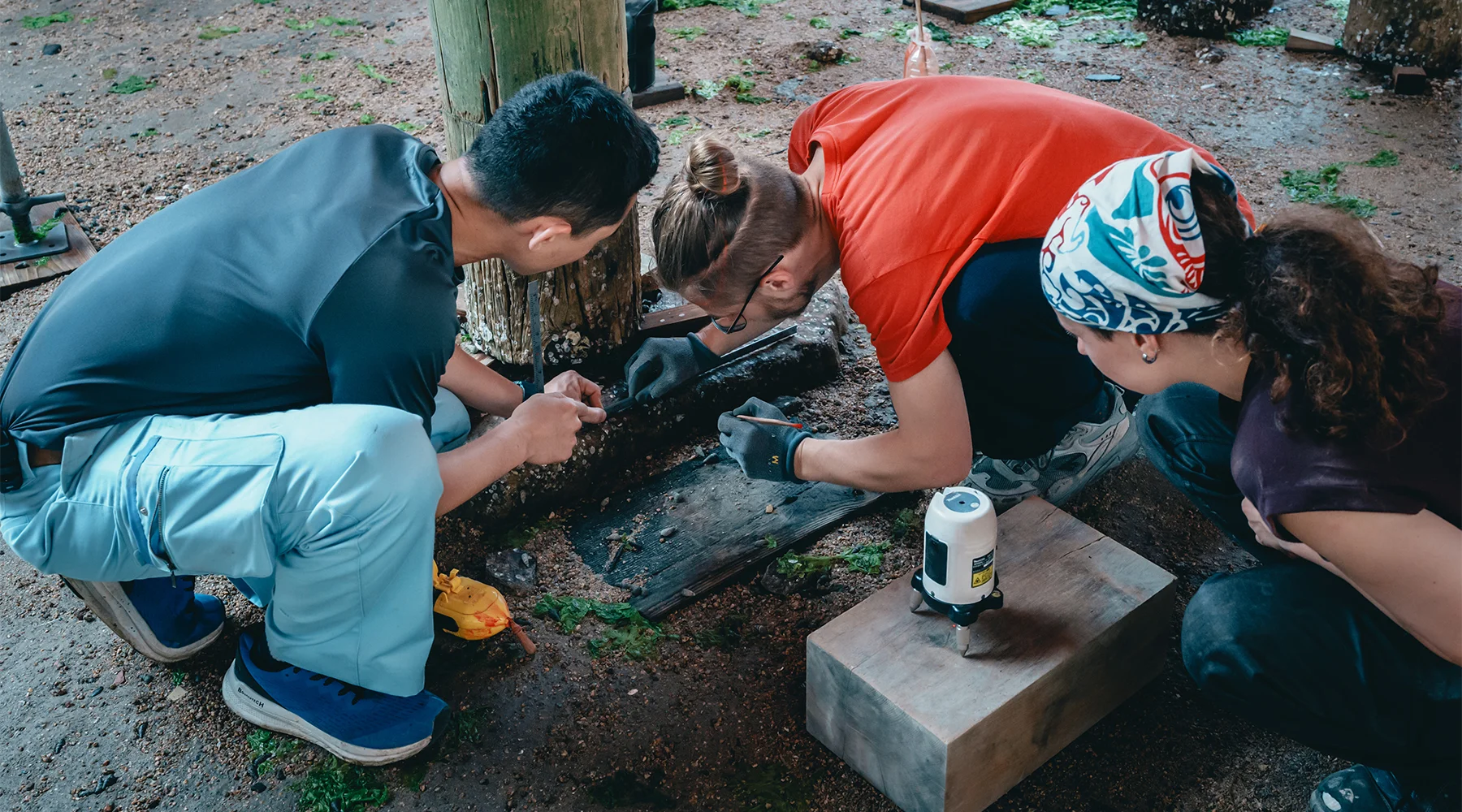
Also, Mr. Mikitoshi Hino, who has been working with Mr. Mifune for eight years, is expected to become a successor in the future. "Not just anybody can be the master carpenter at Itsukushima Shrine. I want to engage in my work with pride," said Mr. Hino as he quietly expressed his determination.
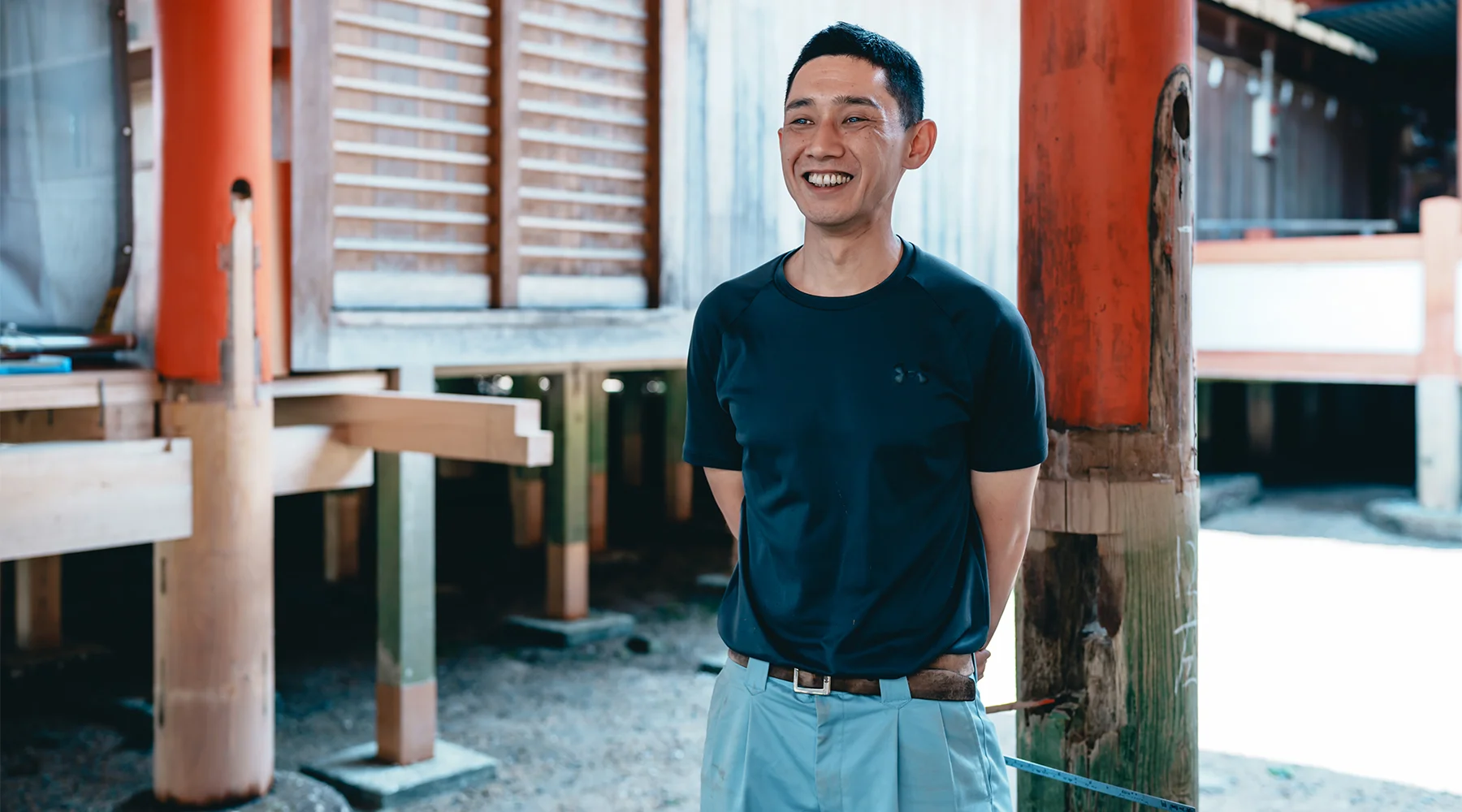
It is said that it takes at least 10 years to become a full-fledged miyadaiku carpenter. Mr. Mifune says that there is no end to mastering one's techniques.
"There are still things that even I don't know. But the techniques of miyadaiku carpenters are essential to protect Itsukushima Shrine as well as all the other shrines and temples in Japan. We must not allow the traditional technologies of Japan, which have survived to today, to die out here. Striving to pass on this technology gives my life purpose now."
